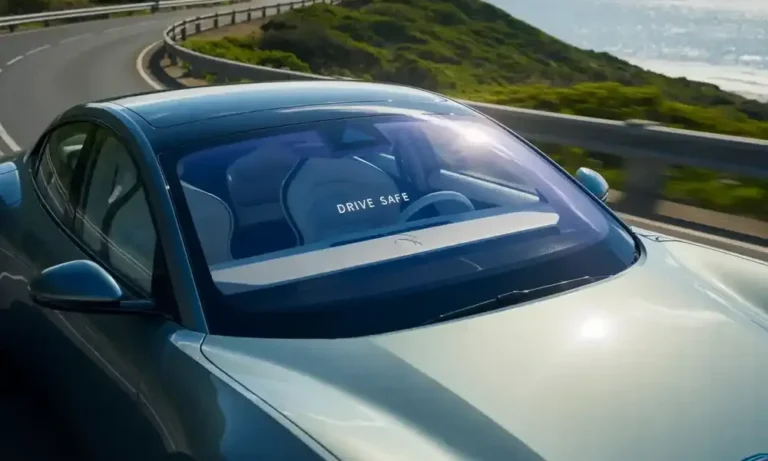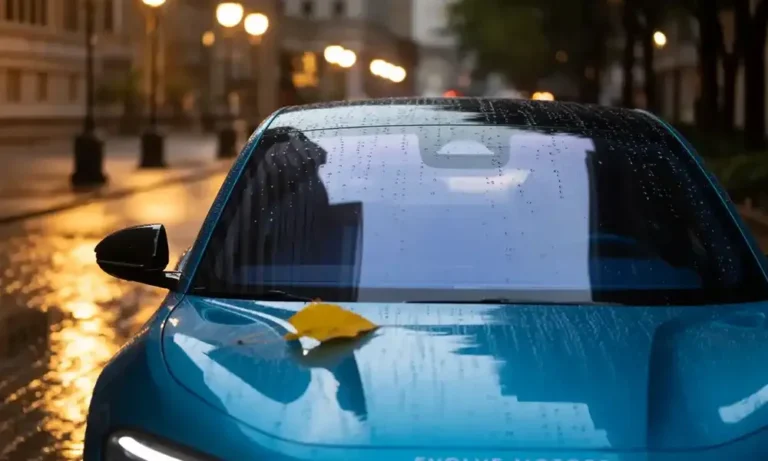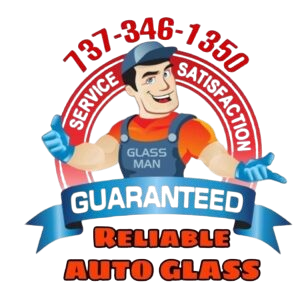Are Windshield Distortions Common In New Cars
Are windshield distortions common in new cars? Surprisingly, yes—while not extremely widespread, some brand-new vehicles do come with a distorted windshield straight from the factory. Windshield distortion refers to visual irregularities in the glass that make straight lines appear curved or create a wavy, warped view.Visibility may be impacted, particularly at night or in direct sunshine. For new car owners, it’s important to spot these issues early, as they can impact both safety and comfort. A distorted windshield may result from manufacturing defects, improper installation, or even subpar glass quality. Knowing what to look for helps ensure your new car meets the quality you expect.
Are Windshield Distortions Common in New Cars?

Yes, they can occur, but they aren’t always common.
Why Even New Cars Might Have a Wavy or Distorted Windshield
A wavy windshield or a distorted windshield in a new car might seem surprising, but it’s not unheard of. Even though automakers follow strict quality control, small imperfections can still slip through due to manufacturing tolerances or during installation.
1. Manufacturing Tolerances
Windshields are made by heating and bending glass into shape. If the temperature or forming process isn’t precisely controlled, it can lead to optical distortions. This is where the distorted windshield effect comes from — it might look like a ripple or wave, especially at the edges or when viewed at certain angles.
There may be slight differences even among OEM (original equipment manufacturer) glass. These are usually within acceptable industry standards, but they may still be noticeable to sensitive drivers.
2. Installation Issues
In some cases, a windshield that looks fine off the vehicle becomes a wavy windshield after installation. This can happen if:
- The glass is not seated perfectly flush with the frame.
- Adhesives are unevenly applied.
- The vehicle body has minor imperfections that affect alignment.
These factors can slightly warp the view through the glass.
3. OEM vs Aftermarket Glass
While OEM windshields are designed to match the exact specs of the car, aftermarket windshields can sometimes lead to more noticeable distortions. Not all aftermarket glass is made to the same tolerances, and while many are high quality, some may not fit as precisely — increasing the chances of getting a wavy or distorted windshield.
You can also read about windshield replacement in Austin Texas.
Windshield Distortions Causes | What Leads to a Wavy Windshield?
A wavy windshield or noticeable windshield distortion can be distracting and even dangerous while driving. While most drivers expect crystal-clear visibility, various factors—especially during manufacturing or installation—can cause these visual issues. Below are the most common causes of windshield distortion in both new and replacement glass.
1. Optical Quality of the Glass
The primary cause of windshield distortion is often the optical quality of the glass itself. When glass isn’t formed evenly during production, it can create waves or bends that alter how light passes through. These distortions are usually more noticeable at the edges or when viewed at certain angles. A low-grade glass pane may create that familiar wavy windshield effect, even if it’s brand new.
2. Improper Installation from the Factory
Poor installation can cause distortions even with high-quality glass. When a windshield is not properly aligned or bonded to the frame, the slight shift can cause pressure on the glass, creating a warped or wavy windshield appearance. This is especially true if the urethane adhesive is applied unevenly or if the curing process is rushed.
3. Curvature Flaws or Pressure Points in the Frame
A vehicle’s frame must match the curve of the windshield precisely. If there are slight imperfections or pressure points in the frame, the windshield may bend unnaturally once installed. This warping results in noticeable windshield distortion, which could worsen over time due to vibrations and road conditions.
4. Subpar Glass Batches or Transport Damage
Some glass batches may pass quality control with small, undetected imperfections. Additionally, even high-quality windshields can suffer minor damage during shipping or handling, such as bending or micro-cracks, which eventually show up as wavy windshield issues when installed.
5. Extreme Temperature During Installation
Temperature plays a crucial role during windshield installation. If the glass is installed in extremely hot or cold conditions, or if rapid heating is used to cure adhesives, it can stress the glass unevenly. This thermal pressure often leads to windshield distortion, especially in curved areas.
5 Common Signs of a Defective Windshield
Your vehicle’s windshield is more than just a piece of glass—it plays a critical role in your visibility, safety, and even the structural integrity of your car. A wavy windshield or signs of windshield distortion should never be ignored, especially if you just got your glass replaced or recently bought a new vehicle. Below are five clear warning signs that your windshield might be defective or improperly installed.
1. Visual Waviness or Bends When Viewed from an Angle
A healthy windshield should provide a crystal-clear view with no bending or rippling. If you notice any wavy windshield effects—like mild undulations or waves in the glass—it’s likely due to manufacturing inconsistencies or improper shaping. These visual ripples are often more noticeable at the edges or when you look from the side of the vehicle. Over time, this can impact your ability to judge distances correctly, especially when switching lanes or navigating tight areas.
2. Light Glares or Halos While Driving at Night
Driving at night already comes with reduced visibility, but a defective windshield can make things worse. If headlights or streetlights create excessive glare, starbursts, or halos through the windshield, you may be dealing with windshield distortion. This typically happens when the glass surface isn’t optically uniform—often caused by cheap materials or poor production quality. This not only strains your eyes but can create a dangerous driving environment.
3. Objects Appear Stretched or Bent Through the Glass
If vehicles, road signs, or lane markings look stretched, bent, or oddly shaped when viewed through your windshield, it’s a strong indicator of distortion. This happens when light refracts unevenly due to imperfections in the glass surface. A wavy windshield creates this issue most noticeably at the edges or corners, but in severe cases, it may affect the center of your vision too. This visual warping can be subtle at first but grows more distracting over time.
4. Straining Eyes While Driving
Even minor windshield distortion can force your eyes to constantly adjust. If you experience frequent eye fatigue, headaches, or blurred vision during or after driving, the glass might be the culprit. Your brain is working harder to make sense of the distorted view, and that extra strain takes a toll. This is especially problematic for long-distance commuters or professional drivers who spend hours on the road daily.
5. Wind Noise or Vibration Near the Edges
A properly installed windshield should be airtight and silent. If you hear wind whistling, buzzing, or rattling sounds—especially at higher speeds—it may be due to poor sealing or incorrect fitment. These gaps allow airflow and vibration, which over time can lead to stress cracks or loosening of the glass. Improper seating can also warp the windshield subtly, leading to increased wavy windshield effects and further distortion.
When Should You Go to Professionals for Windshield Distortion?

Not all windshield issues require immediate replacement—but knowing when to call a professional can save you from serious safety risks and costly repairs. Whether you’re noticing a wavy windshield or increasing windshield distortion, here are key times when it’s best to have your glass inspected by certified auto glass experts.
1. If Vision Is Affected While Driving
The moment your visibility is compromised—whether it’s due to light glare, warped objects, or visual ripples—you should consult a professional. A distorted view can delay your reaction time and increase the chances of accidents. Certified experts can assess whether the distortion is within acceptable limits or if a replacement is needed for safe driving.
2. When Distortion Grows Over Time
A slight windshield distortion might not seem like a big deal at first, but if it worsens, it’s a red flag. Gradual warping can point to a structural issue with the glass, frame, or adhesive. Waiting too long may lead to bigger problems like cracking or complete failure of the windshield.
3. Before the Warranty Runs Out (For New Cars)
If your vehicle is still under warranty and you notice a wavy windshield, don’t delay. Distortions caused by manufacturing defects are typically covered under warranty—but only if reported in time. An inspection before your warranty expires gives you the best chance to fix the issue without paying out of pocket.
4. If the Glass Is Not OEM Quality
Aftermarket windshields vary in quality, and some may not meet OEM standards. If your replacement glass wasn’t sourced from a trusted provider, and you’re seeing windshield distortion, it’s time for a professional evaluation. Certified experts can tell you whether the distortion is due to the glass type, installation issues, or other factors.
Benefits of Choosing Certified Auto Glass Experts
Getting your windshield checked by certified professionals ensures:
- Accurate diagnosis of the issue
- Use of OEM-quality or higher-grade replacement glass
- Safe, clean, and proper installation
- Long-term protection against leaks, distortion, and vibration
At Texas Reliable Auto Glass, our team is trained to spot even the slightest wavy windshield issues and recommend the best fix—whether that’s repair or full replacement. Don’t leave your safety to chance. Book a professional inspection with us today and get peace of mind on the road.
Don’t Ignore Windshield Distortion| Even in New Cars
Just because your car is new doesn’t mean it’s immune to issues like a wavy windshield or subtle windshield distortion. While it’s not extremely common, it’s also not rare—and when it does happen, it can affect your visibility, driving comfort, and overall safety.
Why It Matters
Even small distortions in the glass can cause glares, visual fatigue, and difficulty judging distances. Over time, this can lead to eye strain or dangerous misjudgments on the road. In new vehicles, distortion is often linked to minor manufacturing tolerances, pressure points in the frame, or low-quality aftermarket glass replacements.
Don’t Wait—Get It Checked
Ignoring a distorted windshield can make things worse. Whether you’ve just bought a new car or recently replaced the glass, it’s smart to get it inspected early—especially if your vision feels off or you’re noticing odd reflections or waves in the glass.
Trust the Experts
For peace of mind and road safety, have your windshield inspected by certified technicians. At Texas Reliable Auto Glass, we specialize in diagnosing and correcting even the slightest windshield issues. We’ll help you determine if it’s just a visual quirk—or a real problem that needs fixing.
Final Thought: Windshield distortion may seem minor, but your visibility is vital. Don’t risk it—schedule a quick, professional inspection and drive with confidence. Contact us today to book your windshield inspection or replacement. Protect your vision and stay safe on the road!
FAQs
Can A Wavy Windshield Affect My Driving Safety?
Yes. A wavy or distorted windshield can cause visual discomfort, glare, and difficulty judging distances, all of which may compromise driving safety. It’s important to address these issues promptly.
How Can I Tell If My New Car’s Windshield Has Distortion?
Look for waves or bends in the glass when viewed from an angle, light glares or halos at night, or objects appearing stretched or bent through the windshield. If you notice eye strain while driving, that could also be a sign.
Should I Get Windshield Distortion In A New Car Repaired Or Replaced?
If distortion affects your vision or worsens over time, it’s best to have the windshield inspected by professionals. Sometimes, replacement is necessary, especially if the glass is not OEM quality.
Is Windshield Distortion Covered Under New Car Warranties?
Many new car warranties cover defects related to windshield distortion caused by manufacturing faults. It’s important to report any issues early and get an inspection before your warranty expires.
Who Should I Trust To Inspect Or Fix Windshield Distortion?
Always choose certified auto glass experts like Texas Reliable Auto Glass. They have the tools and experience to properly assess and resolve windshield distortion problems.

